MEA Sodium-dependent Glucose Co-transporter 2 Inhibitors Market Size
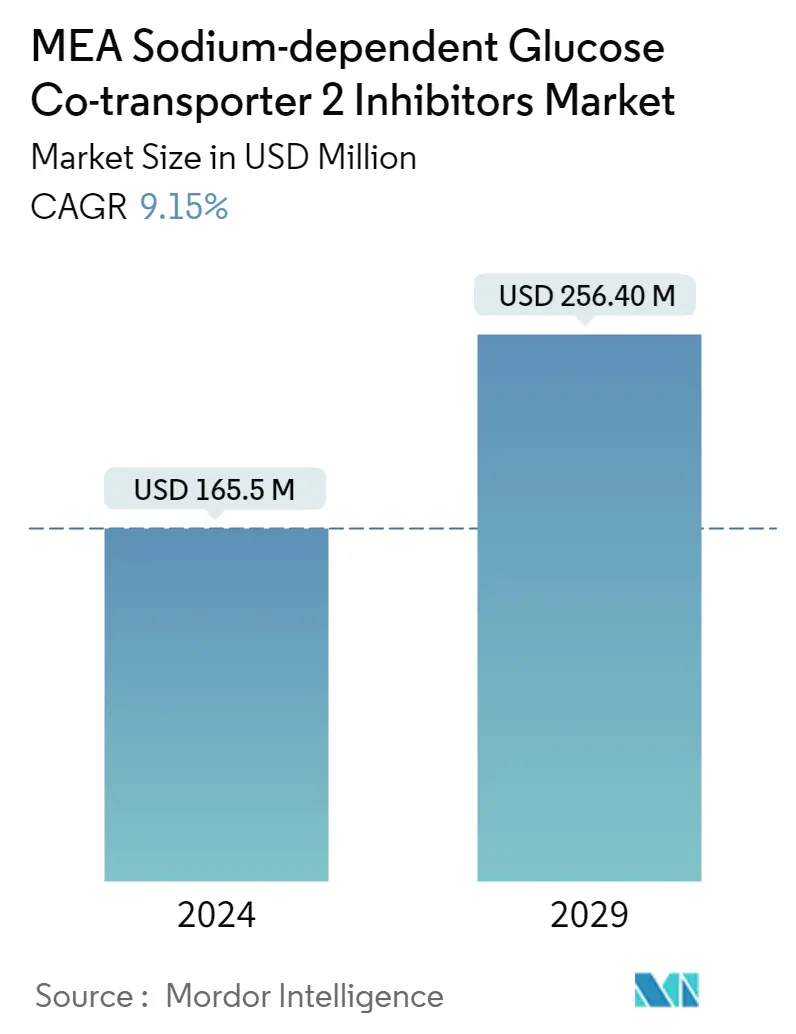
| Study Period | 2019 - 2029 |
| Base Year For Estimation | 2023 |
| Market Size (2024) | USD 165.50 Million |
| Market Size (2029) | USD 256.40 Million |
| CAGR (2024 - 2029) | 9.15 % |
| Market Concentration | High |
Major Players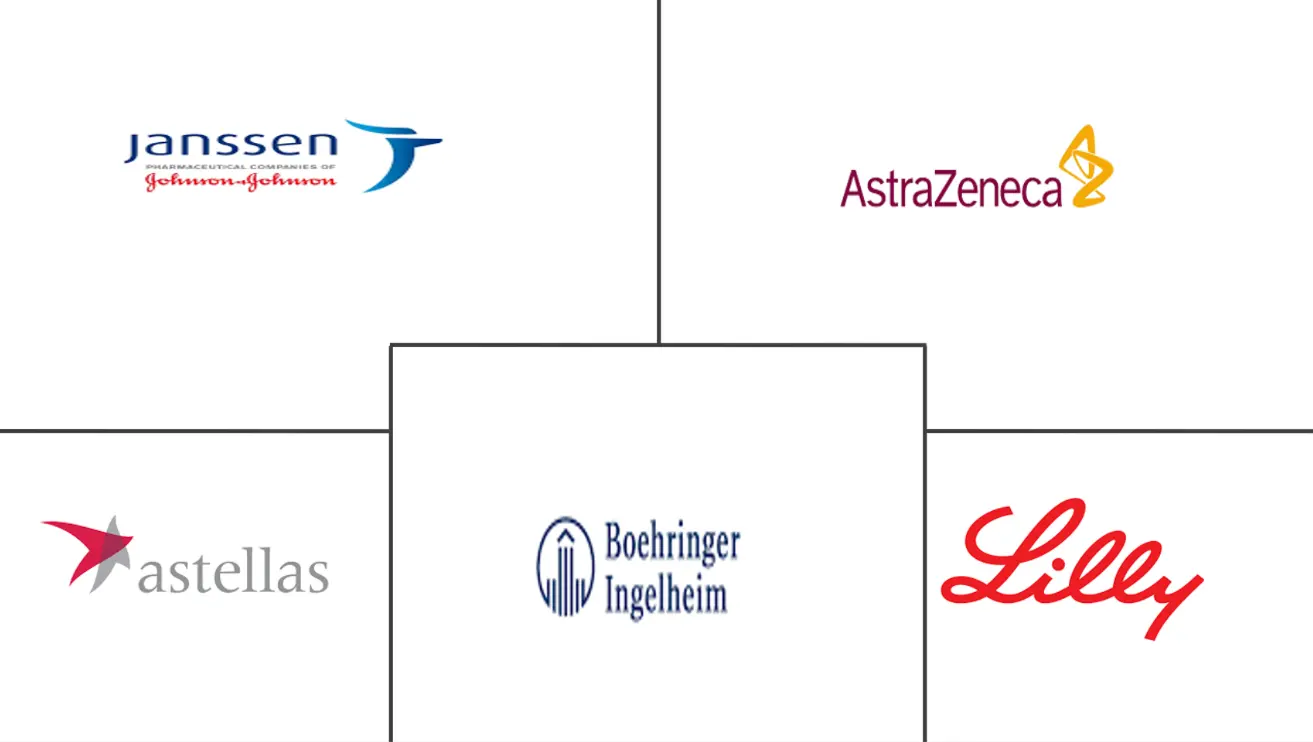
*Disclaimer: Major Players sorted in no particular order |
MEA Sodium-dependent Glucose Co-transporter 2 Inhibitors Market Analysis
The MEA Sodium-dependent Glucose Co-transporter 2 Inhibitors Market size is estimated at USD 165.5 million in 2024, and is expected to reach USD 256.40 million by 2029, growing at a CAGR of 9.15% during the forecast period (2024-2029).
The COVID-19 pandemic positively impacted the Asia-Pacific Sodium-Dependent Glucose Cotransporter 2 market. People with diabetes have a weak immune system so, with COVID-19, the immune system gets weaker very fast. People with diabetes have more chances to get into serious complications rather than normal people. The manufacturers of diabetes drugs have taken care during COVID-19 to deliver the medications to diabetes patients with the help of local governments. NovoNordisk stated on their website that 'Since the start of COVID-19, our commitment to patients, our employees and the communities where we operate has remained unchanged, we continue to supply our medicines and devices to people living with diabetes and other serious chronic diseases, safeguard the health of our employees, and take actions to support doctors and nurses as they work to defeat COVID-19.'
The Market is increasing mainly due to the drugs Jardiance and Farxiga/Forxiga. Jardiance is a once-daily oral medication that is used to control blood glucose levels in people suffering from type-2 diabetes. Patients prefer this drug, as it has a lesser risk of cardiovascular diseases when compared to other SGLT 2 class of drugs. The number of diabetic patients in Middle-East and Africa is increasing immensely over the past few years due to factors, including the increasing geriatric population in the region and the increase in the overweight and obese population, owing to unhealthy diets and physical inactivity. As diabetes can potentially increase the risk of cardiovascular diseases, it needs to be managed well by seeking suitable treatments at regular intervals of time.
MEA Sodium-dependent Glucose Co-transporter 2 Inhibitors Market Trends
Increasing Diabetic Population is Supporting the SGLT 2 Inhibitors Market to Grow in the Middle-East and Africa Region
Currently, the IDF MENA Region will have 73 million individuals (20-79) with diabetes. This number is expected to rise to 95 million by 2030. Impaired Glucose Tolerance affects 48 million individuals in the IDF MENA Region, putting them at a higher risk of acquiring type 2 diabetes. In 2022, more than USD 33 billion was spent on diabetes healthcare.
The Middle East and African region witnessed an alarming increase in the prevalence of diabetes. In recent years, the rate of diabetes has been at an all-time high, mainly due to lifestyle changes. Diabetes is associated with many health complications. Patients with diabetes require many daily corrections to maintain nominal blood glucose levels, such as administering additional insulin or ingesting additional carbohydrates by monitoring their blood glucose levels. Diabetes poses an emerging healthcare burden across the region. People with diabetes may need to take antidiabetic drugs for their whole lives to control their blood glucose levels and avoid hypoglycemia and hyperglycemia. These agents present the advantages of easier management and lower cost, so they became an attractive alternative to insulin with better acceptance, which enhances adherence to the treatment.
Owing to the factors above, the studied market is anticipated to grow over the analysis period.
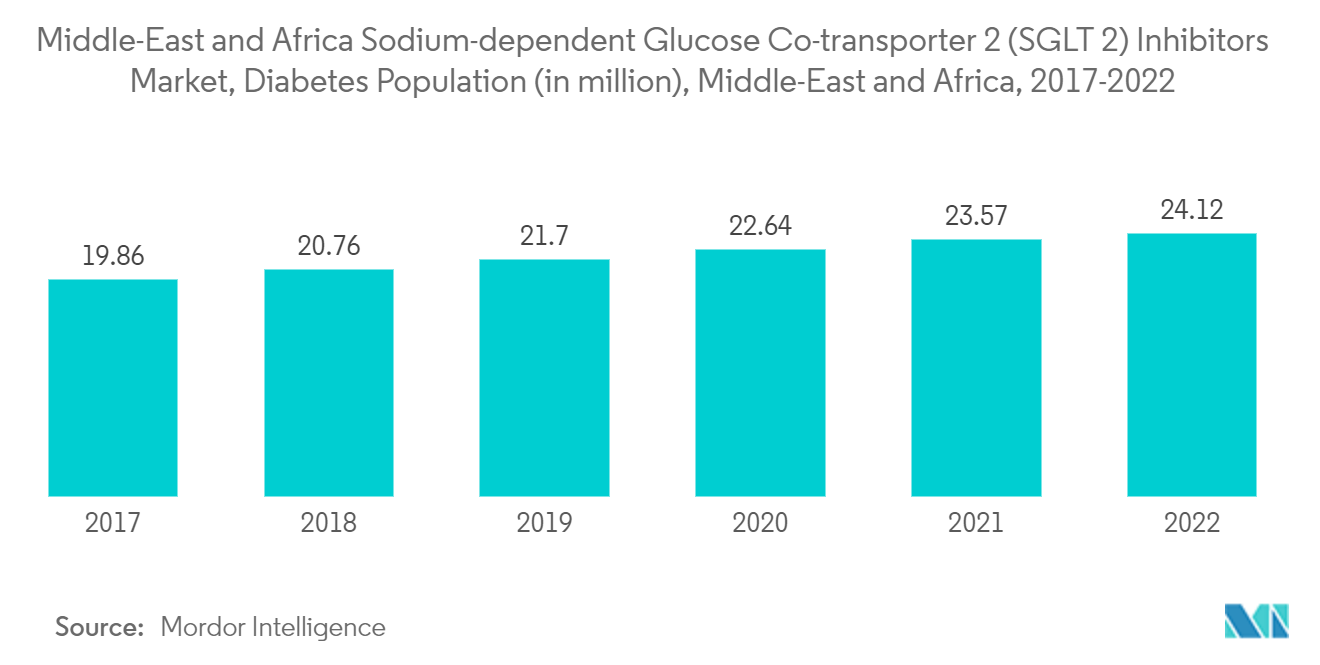
Saudi Arabia Holds the Highest Market Share in the Middle-East and Africa Region
Saudi Arabia held more than 30% of the market share in the Middle East and Africa Region in the current year. Diabetes patients with COVID-19 may have high blood glucose levels, irregular glucose variability, and diabetic complications. Diabetes prevalence in adults with COVID-19 produced a substantial increase in COVID-19 severity and mortality in people with Type 1 (T1DM) or Type 2 diabetes mellitus (T2DM), particularly in connection with poor glycemic control. At the same time, new-onset hyperglycemia and diabetes (both T1DM and T2DM) have become more recognized in COVID-19 and have been linked to worse outcomes.
Saudi Arabia hopes to lower the disease's prevalence by 10% over the next decade. The government is launching several programs to combat the expanding disease, including a levy on sugary beverages, exercise activities, and an emphasis on preventative treatment. The government's focus on controlling diabetes and the country's increasing buying power may benefit the market for diabetes treatments, such as insulin drugs, throughout the projection period.
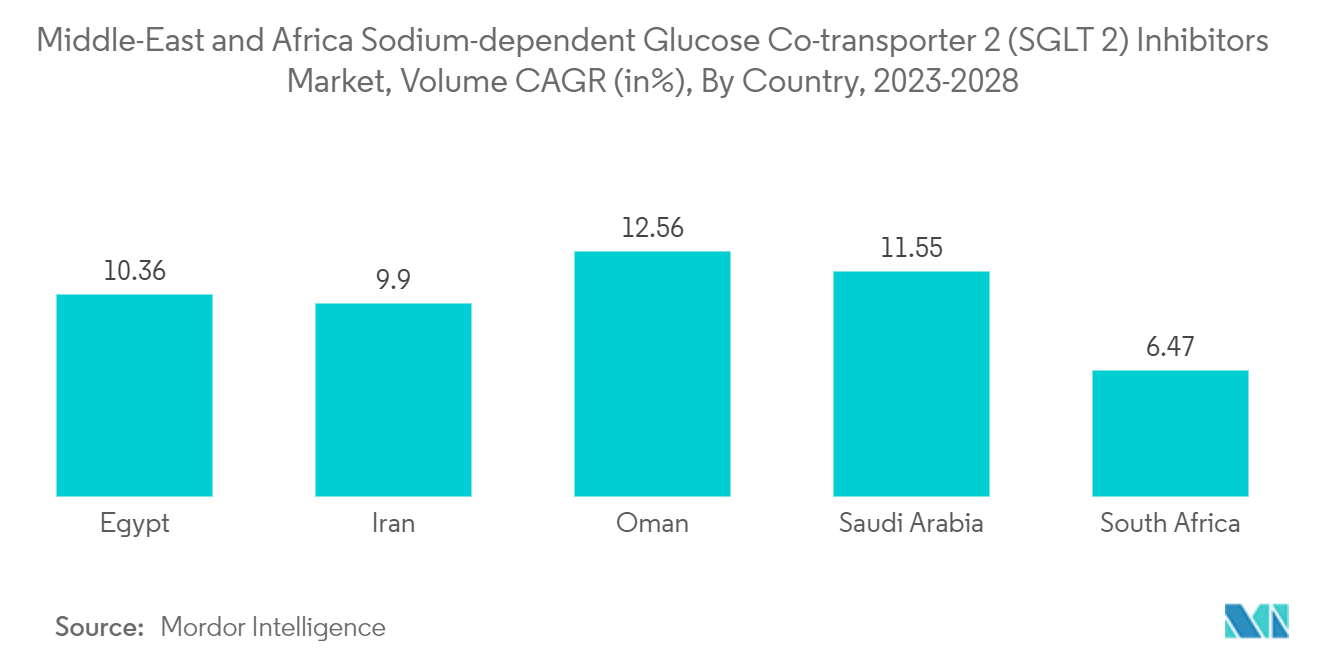
MEA Sodium-dependent Glucose Co-transporter 2 Inhibitors Industry Overview
The SGLT 2 inhibitors market is highly consolidated, with a few significant manufacturers having a Middle East and Africa market presence. The joint ventures between players in the recent past have helped the companies strengthen their market presence. For example, Eli Lilly and Boehringer Ingelheim manufacture Jardiance, a popular SGLT 2 class drug.
MEA Sodium-dependent Glucose Co-transporter 2 Inhibitors Market Leaders
-
Astrazeneca
-
Bristol-Myers Squibb
-
Eli Lilly
-
Janssen
-
Astellas
*Disclaimer: Major Players sorted in no particular order
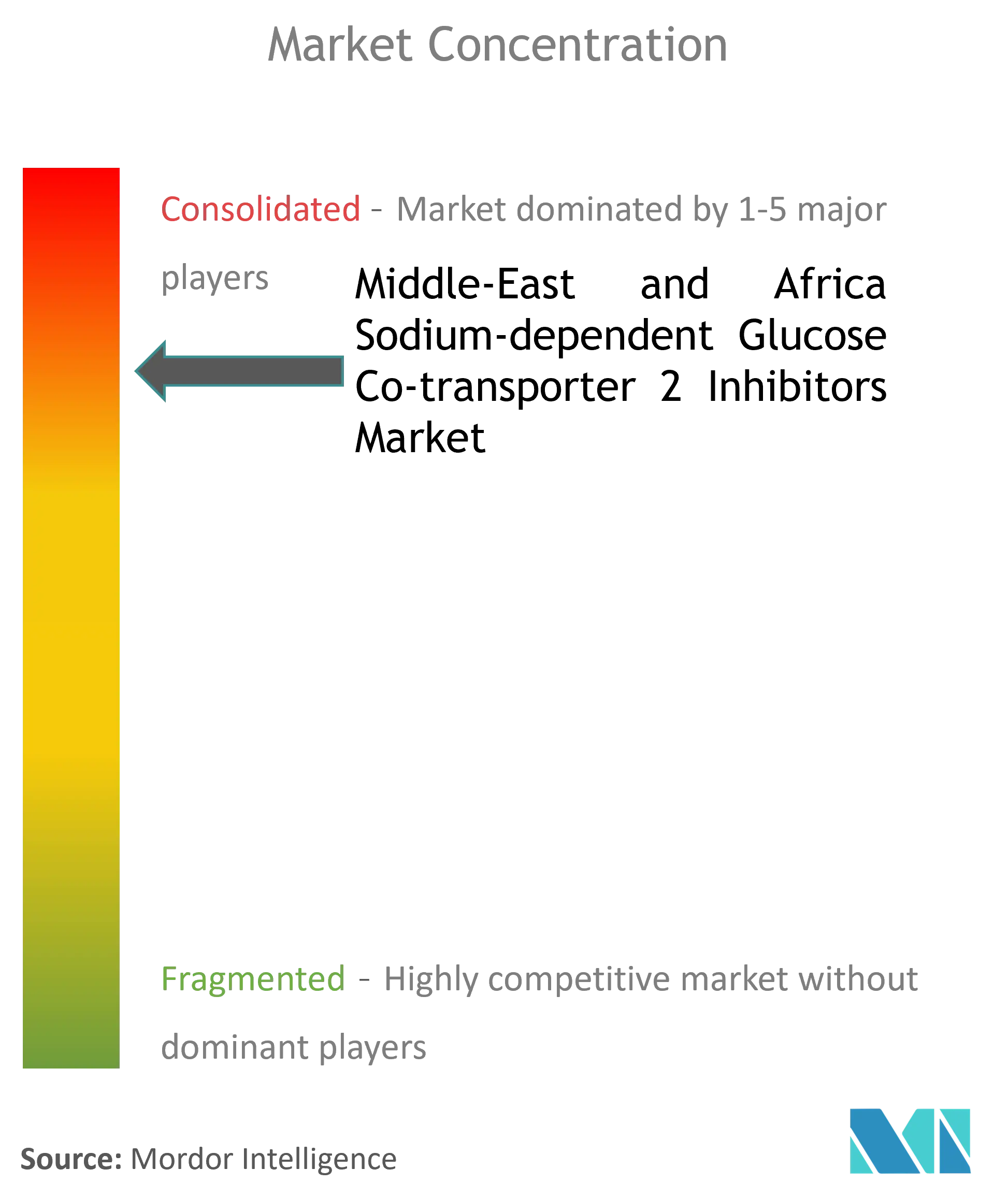
MEA Sodium-dependent Glucose Co-transporter 2 Inhibitors Market News
- April 2022: The sodium-glucose co-transporter-2 (SGLT2) inhibitor, sold as Jardiance, joins Dapagliflozin (sold as Forxiga) as the second medicine of this class to be approved for use in heart failure (HF).
- March 2022: A study by the Journal of Medical Economics, Egypt, stated that Dapagliflozin was found to be a highly cost-effective and cost-saving medication when compared to SOC and sacubitril/valsartan, respectively, in the treatment of HF-rEF from the Egyptian healthcare system perspective.
MEA Sodium-Dependent Glucose Co-Transporter 2 Inhibitors Market Report - Table of Contents
1. INTRODUCTION
1.1 Study Assumptions and Market Definition
1.2 Scope of the Study
2. RESEARCH METHODOLOGY
3. EXECUTIVE SUMMARY
4. MARKET DYNAMICS
4.1 Market Overview
4.2 Drivers
4.3 Restraints
4.4 Porter's Five Forces Analysis
4.4.1 Bargaining Power of Suppliers
4.4.2 Bargaining Power of Consumers
4.4.3 Threat of New Entrants
4.4.4 Threat of Substitute Products and Services
4.4.5 Intensity of Competitive Rivalry
5. MARKET SEGMENTATION
5.1 Drug
5.1.1 Sodium-dependent Glucose Co-transporter 2 (SGLT 2) Inhibitor
5.1.1.1 Invokana (Canagliflozin)
5.1.1.2 Jardiance (Empagliflozin)
5.1.1.3 Farxiga/Forxiga (Dapagliflozin)
5.2 Geography
5.2.1 Saudi Arabia
5.2.2 Iran
5.2.3 Egypt
5.2.4 Oman
5.2.5 South Africa
5.2.6 Rest of Middle-East and Africa
6. MARKET INDICATORS
6.1 Type-1 Diabetes Population
6.2 Type-2 Diabetes Population
7. COMPETITIVE LANDSCAPE
7.1 COMPANY PROFILES
7.1.1 Eli Lilly
7.1.2 Janssen Pharmaceuticals
7.1.3 Boehringer Ingelheim
7.1.4 AstraZeneca
7.1.5 Bristol Myers Squibb
- *List Not Exhaustive
7.2 MARKET SHARE ANALYSIS
7.2.1 Eli Lilly
7.2.2 Janssen Pharmaceuticals
7.2.3 Boehringer Ingelheim
7.2.4 AstraZeneca
8. MARKET OPPORTUNITIES AND FUTURE TRENDS
MEA Sodium-dependent Glucose Co-transporter 2 Inhibitors Industry Segmentation
SGLT2 inhibitors are a class of prescription medicines that are FDA-authorized to be used with diet and exercise to decrease blood sugar in adults with type 2 diabetes. Middle-East and Africa, Sodium-dependent Glucose Co-transporter 2 Inhibitors Market, Witnessed USD 135 million in the current year and is anticipated to register a CAGR of over 11% during the forecast period. Middle-East and Africa Sodium-dependent Glucose Co-transporter 2 Inhibitors Market is Segmented into Drug (Invokana, Jardiance, and Farxiga/Forxiga) and Geography. The report offers the value (in USD million) and volume (in Units million) for the above segments. We will provide a segment-wise breakdown (Value and Volume) for all the countries covered under the Table of Contents.
| Drug | |||||
|
| Geography | |
| Saudi Arabia | |
| Iran | |
| Egypt | |
| Oman | |
| South Africa | |
| Rest of Middle-East and Africa |
MEA Sodium-Dependent Glucose Co-Transporter 2 Inhibitors Market Research FAQs
How big is the MEA Sodium-dependent Glucose Co-transporter 2 Inhibitors Market?
The MEA Sodium-dependent Glucose Co-transporter 2 Inhibitors Market size is expected to reach USD 165.50 million in 2024 and grow at a CAGR of 9.15% to reach USD 256.40 million by 2029.
What is the current MEA Sodium-dependent Glucose Co-transporter 2 Inhibitors Market size?
In 2024, the MEA Sodium-dependent Glucose Co-transporter 2 Inhibitors Market size is expected to reach USD 165.50 million.
Who are the key players in MEA Sodium-dependent Glucose Co-transporter 2 Inhibitors Market?
Astrazeneca, Bristol-Myers Squibb, Eli Lilly, Janssen and Astellas are the major companies operating in the MEA Sodium-dependent Glucose Co-transporter 2 Inhibitors Market.
What years does this MEA Sodium-dependent Glucose Co-transporter 2 Inhibitors Market cover, and what was the market size in 2023?
In 2023, the MEA Sodium-dependent Glucose Co-transporter 2 Inhibitors Market size was estimated at USD 151.63 million. The report covers the MEA Sodium-dependent Glucose Co-transporter 2 Inhibitors Market historical market size for years: 2019, 2020, 2021, 2022 and 2023. The report also forecasts the MEA Sodium-dependent Glucose Co-transporter 2 Inhibitors Market size for years: 2024, 2025, 2026, 2027, 2028 and 2029.
MEA Sodium-dependent Glucose Co-transporter 2 Inhibitors Industry Report
Statistics for the 2024 MEA Sodium-dependent Glucose Co-transporter 2 Inhibitors market share, size and revenue growth rate, created by Mordor Intelligence™ Industry Reports. MEA Sodium-dependent Glucose Co-transporter 2 Inhibitors analysis includes a market forecast outlook to for 2024 to 2029 and historical overview. Get a sample of this industry analysis as a free report PDF download.

